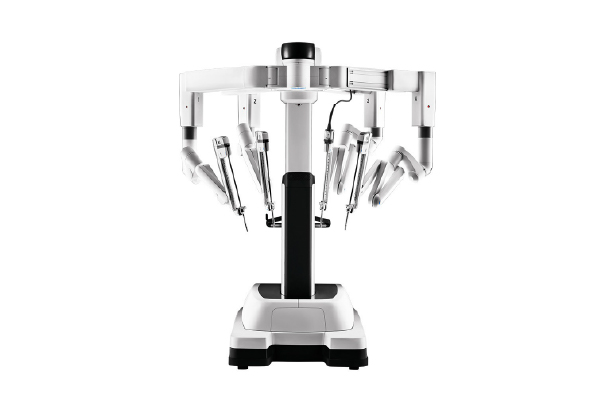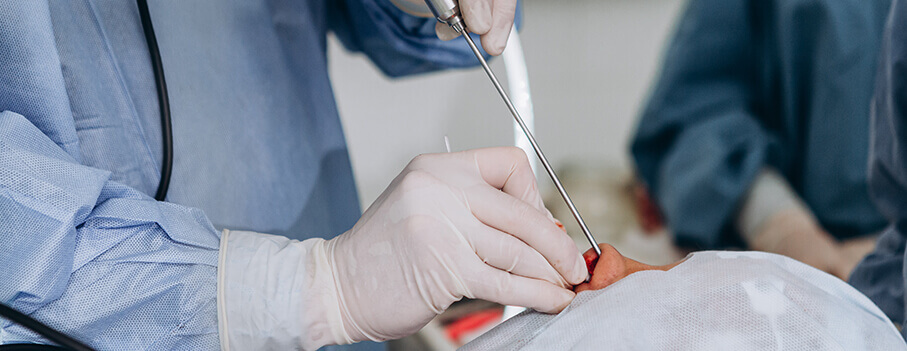Videos
Blogs
Head and Neck Cancer Treatment
Head and neck cancer is the term used to describe the malignant tumors that develop in and around the throat, sinuses, larynx, nose and mouth. An estimated 5,62,328 people have been diagnosed with head and neck cancer as of 2020. Fortunately, this cancer can be curable with early screening, diagnosis and treatment.
Causes:
Tobacco is one of the key contributors to head and mouth cancer. In fact, about 85% of head and mouth cancers can be traced back to smoking. The combined use of tobacco and alcohol accounts for about 75% of head and neck cancer. Passive smoking increases the chances of head and neck cancer as well.
Other factors that cause head and neck cancer include:
- Human papillomavirus (HPV).
- Epstein-Barr virus (EBV).
- Chewing betel quid or paan.
- Extreme ultraviolet rays exposure.
- Genetic conditions like Fanconi anaemia and dyskeratosis congenital.
- Lack of necessary nutrition.
- Poor oral hygiene.
Types of head and neck cancer:
Most head and neck cancers are squamous cell carcinomas - meaning cancer begins in the squamous cells that make up the thin tissue of the head and neck. These squamous cell carcinomas, if not treated at the beginning stages, spread to the other parts of the body, including the lymph nodes and lungs. Browse through for more information on the specific types of head and neck cancers we treat:
- Laryngeal cancer - The malignant cancer cells form within the tissues of the larynx. The larynx is a hollow tube connecting your throat to your respiratory system. It holds the vocal cords and is often called the voice box. It also helps in swallowing.
- Hypopharyngeal cancer - The malignant cancer cells form within the tissues of the hypopharynx. The hypopharynx is the lower part of the throat, referred to as the gullet. It is a crucial connection point through which food, air and water pass through.
- Oropharyngeal cancer - The malignant cancer cells form within the tissues of the oropharynx. It is the part of the throat at the back of the mouth behind the oral cavity. It is the middle part of the throat and allows food, air and water to pass through.
- Nasopharyngeal cancer - The malignant cancer cells form within the tissues of the nasopharynx. The nasopharynx is the upper part of the throat and allows air to pass from your nose into your windpipe and eventually into your lungs.
- Oral cancer - Oral cancer or mouth cancer can occur on the lips, gums, tongue, inner lining of the cheeks, the roof of the mouth and the floor of the mouth (under the tongue).
- Salivary gland cancer - The malignant cancer cells form in the tissues of the salivary glands.
- Nasal cavity and paranasal sinus cancer - The malignant cancer cells form within the tissues of the nasal cavity. The nasal cavity and paranasal sinuses are located at the top of the upper respiratory tract. Their primary function is to filter, warm and moisten the air you breathe and give you the sense of smell.
- Tonsil cancer - The malignant cancer cells form within the tissues of the tonsils. The tonsils are a part of the immune system and stop germs from entering the body through the mouth or nose.
Brain, eye and thyroid cancers are not associated with head and neck cancers and require different diagnoses and treatments.
Head and neck cancers are characterised by the following symptoms.
Oral cancer:
Hypopharyngeal, Oropharyngeal and Nasopharyngeal cancer:
Laryngeal cancer:
Nasal cavity and paranasal sinus cancer:
Salivary gland cancer:
It is important to note that these symptoms do not necessarily point to cancer at all times. Please make an appointment with us if you have any of the above symptoms so we can give you a correct diagnosis.
At Veritas Cancer Care, we employ the latest tests to arrive at a suitable prognosis and formulate a specialised treatment plan based on your needs. We have several methods of diagnosis.
Head and neck cancer is highly curable if detected in the early stages. While the primary goal is curing cancer, preserving the surrounding organs and tissues is also crucial. The quality of life of the patient post-treatment is also one of our primary concerns. We specialise each treatment based on the needs of the patients and how it would affect the way they talk, breathe, chew and look.
The various treatments options for head and neck cancer include:
The patient's quality of life after recovering from head and neck cancer is a crucial part that dictates their aftercare due to the nature of the treatment and the location of the cancer. At Veritas Cancer Care, we aim to provide our patients with the utmost care and comfort they need during their treatment and remission and improve their quality of life as much as possible. Our team here is dedicated to our patients and, while cancer is a daunting illness, we provide you with all the help and hope you need to recover.
The oncological team at Veritas Cancer Care is headed by Dr Venkat P, a highly-trained surgical oncologist and robotic surgeon experienced in treating head and neck cancer. With over 22 years of experience, he has managed around 25,000 oncological cases and performed over 20,000 surgeries. Being one of the very few surgeons in the country highly trained in the latest treatment procedures such as robotic surgery, ERAS and fluorescence-guided surgery, Dr Venkat is a renowned surgical oncologist with various awards to his credit. At Veritas, we guarantee you will receive prompt care and treatment in his safe and experienced hands.
Veritas Cancer Care is also one of the few cancer teams in Chennai to use the latest methods in head & neck cancer treatment. Headed by Dr Venkat P, we guarantee you will receive prompt care and treatment in his safe and experienced hands.



























